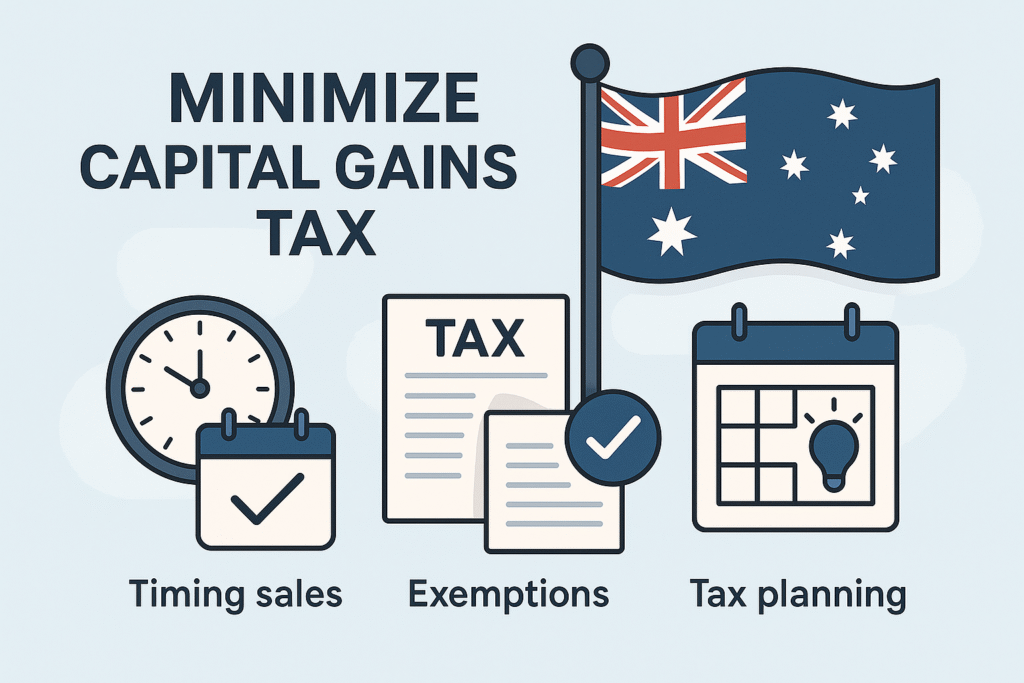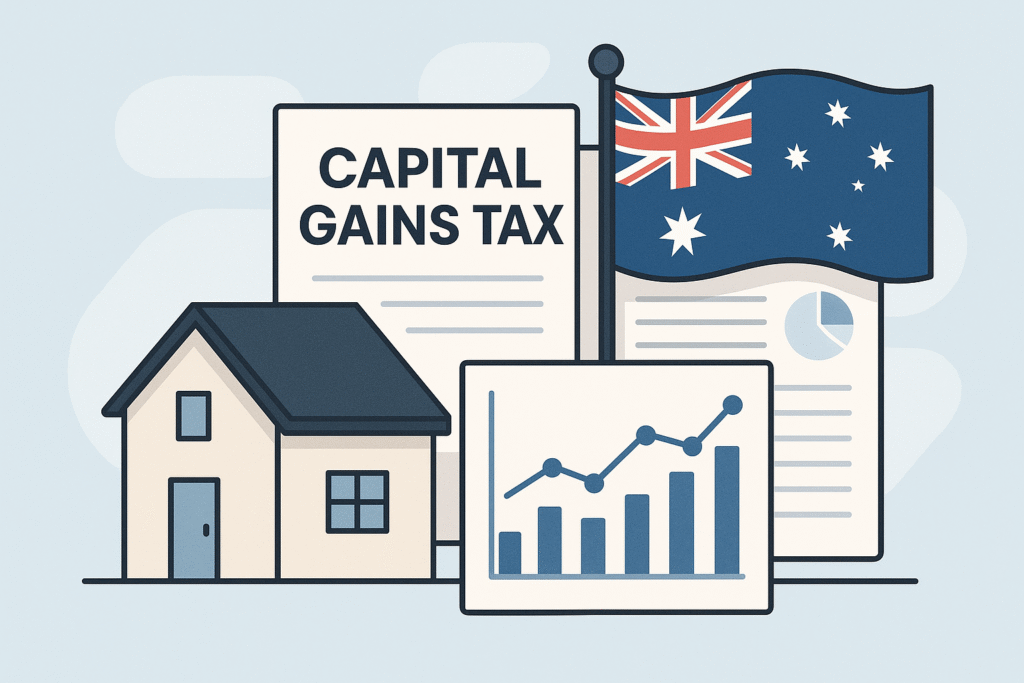When you’re ready to sell your property in Australia, understanding Capital Gains Tax (CGT) is crucial for making informed financial decisions and avoiding unexpected tax bills. Whether you’re selling an investment property or considering the tax implications of your family home, this comprehensive guide covers everything you need to know about CGT in the Australian property market.
What is Capital Gains Tax?
Capital Gains Tax is the tax you pay on the profit made when selling an asset for more than what you originally paid for it. In Australia, CGT isn’t a separate tax but forms part of your income tax system. When you sell a property, the profit (capital gain) is added to your taxable income for that financial year and taxed at your marginal tax rate.
A capital gain is calculated as the difference between your property’s sale price and its cost base, which includes the original purchase price plus associated costs like legal fees, stamp duty, and improvements.
When Does CGT Apply to Property Sales?

Investment Properties
CGT applies to most investment properties sold for a profit. The CGT event occurs when you enter into the contract of sale, not at settlement. You must report the capital gain in your tax return for the financial year in which you signed the contract and pay the CGT when you lodge your tax return.
Principal Place of Residence
Your main residence is typically exempt from CGT under the main residence exemption. However, CGT may apply if you:
Rent out part of your home
Use it for business purposes
Own more than 2 hectares of land
Inherited Properties
When selling inherited property, CGT considerations depend on when the deceased acquired the property. If the property was the deceased’s main residence and you sell within two years of their death, you may be exempt from CGT.
How to Calculate Your CGT Liability
The CGT calculation follows this basic formula:
Capital Gain = (Sale Price – Purchase Price) – Eligible Deductions
Your CGT liability depends on several factors:
The profit you make on the sale
How long you held the property
Your other income from salary and investments
Available capital losses
Applicable CGT discounts or exemptions
CGT Discounts and Exemptions
50% CGT Discount
If you’ve owned the property for at least 12 months and are an Australian resident, you can reduce your capital gain by 50%. This means if you make a $50,000 capital gain, your taxable income only increases by $25,000.
Capital Losses
Capital losses from selling other assets can be used to offset capital gains. While you cannot deduct capital losses from your regular taxable income, you can carry forward unused losses to future years.
Explore more mine article
Small Business Concessions
Small business entities may qualify for additional concessions:
15-year exemption: No CGT if you’ve owned the asset for 15+ years and meet age/retirement criteria
50% active asset reduction: Further 50% reduction for business assets
Retirement exemption: Up to $500,000 lifetime limit
Rollover relief: Defer CGT when acquiring replacement assets
Affordable Housing Discount
An additional 10% CGT discount applies to properties used for affordable rental housing, increasing the total discount to 60%.
Tax Rates and Payment
CGT is calculated at your marginal tax rate, which can range from 0% to 45% plus the Medicare levy. After applying the 50% discount for assets held over 12 months, the effective rate for individual investors typically ranges from 0% to 23.5%.
For higher income earners, CGT can be substantial. Individuals in higher tax brackets may pay up to 45% on their capital gains, making proper planning essential.
Strategies to Minimize CGT
Timing Your Sale
Hold for 12+ Months: Ensure you qualify for the 50% CGT discount by holding properties for at least 12 months.
Spread Sales Across Financial Years: If selling multiple properties, spreading sales across different financial years can help manage your tax bracket.
Use Your Main Residence Exemption
If you move into your investment property and make it your main residence, you may qualify for the main residence exemption when selling.
Offset with Capital Losses
Use capital losses from other investments to reduce your capital gains. Losses can be carried forward indefinitely if not used in the current year.
Consider Trust Structures
Holding assets in trusts can provide flexibility for distributing capital gains to beneficiaries in lower tax brackets.
Make Superannuation Contributions
Using proceeds from capital gains to make concessional superannuation contributions can reduce your taxable income and offset CGT impact.
Important Deadlines and Record Keeping
Remember that the CGT event occurs when you sign the contract of sale, not at settlement. You must include the capital gain in your tax return for the financial year when the contract was signed.
Maintain detailed records of all property-related expenses, including:
Purchase and sale contracts
Legal fees and stamp duty
Improvement and renovation costs
Rental income and expenses
Insurance and maintenance costs
Planning Ahead
Understanding CGT is essential for property investors and homeowners alike. The tax implications can significantly impact your profits, but with proper planning and understanding of available exemptions and discounts, you can minimize your CGT liability legally and effectively.
Consider consulting with a qualified tax professional or accountant specializing in property taxation to ensure you’re making the most of available concessions and properly calculating your obligations. With CGT rates potentially reaching 45% for high-income earners, professional advice can save you thousands of dollars and help you make more informed investment decisions.
By understanding these CGT principles and planning accordingly, you’ll be better positioned to maximize your property investment returns while meeting your tax obligations in Australia.
















One Response
Its a very informative post and according to the Govt laws. Thanks
I also cover this topic. Property Taxes in Australia.